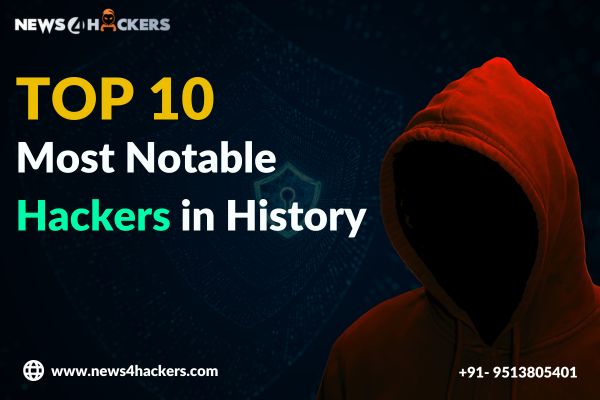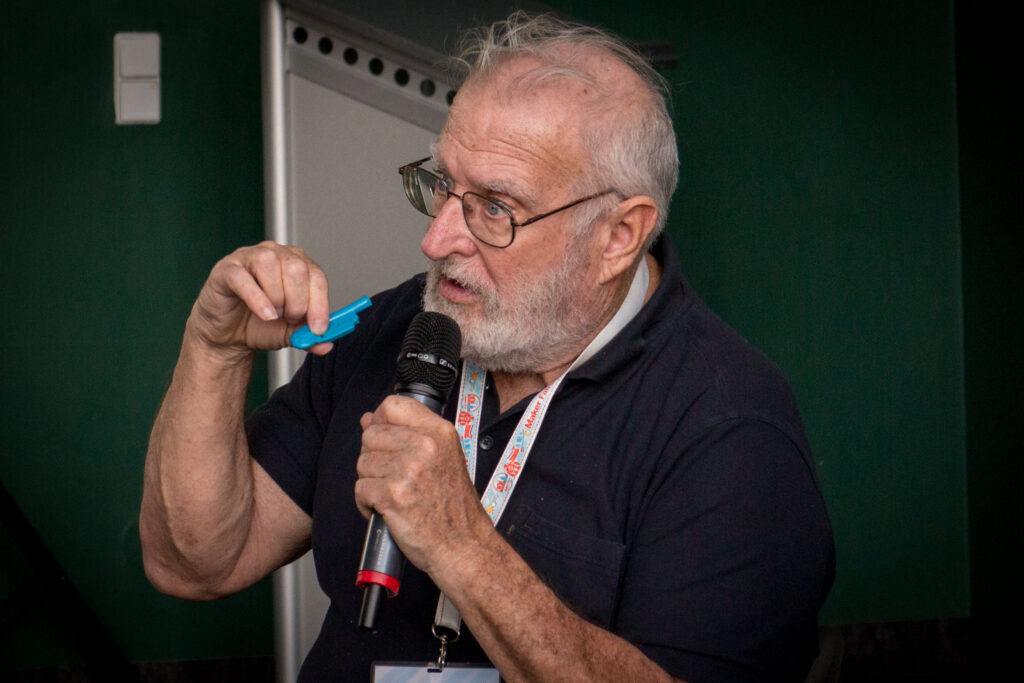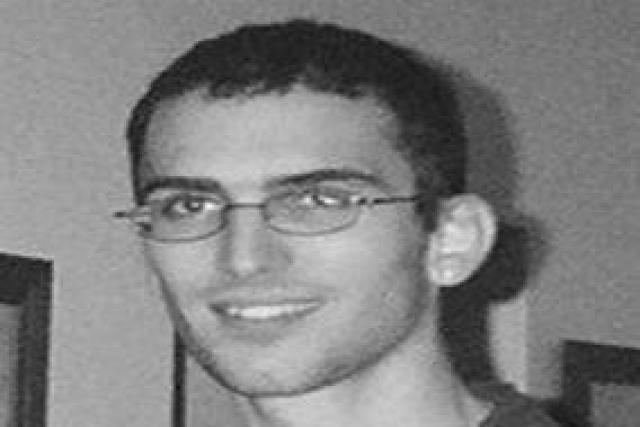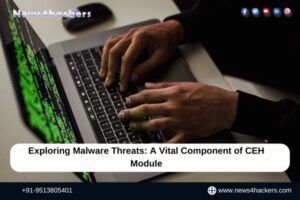Top 10 Most Notable Hackers in History

Top 10 Most Notable Hackers in History
What is hacking?
Computer hacking refers to the deliberate and systematic process of locating and exploiting vulnerabilities within computer systems and networks with the intention of gaining unauthorized access to these systems. Not all instances of hacking are characterized by malicious intent. White hat hackers are those who are employed in the field of cyber security or work as software engineers and testers.
Their primary objective is to identify vulnerabilities within computer systems and software applications with the intention of rectifying these weaknesses. Black hat hackers engage in activities with malevolent intentions. However, it should be noted that a significant, ambiguous zone exists, which is inhabited by those who simultaneously assume the roles of political activists and hackers.
The act of hacking incurs significant financial losses for both organizations and consumers, amounting to trillions of dollars annually. Based on a survey published in CPO Magazine, it is projected that by the year 2021, the financial impact of hacking assaults will escalate to a staggering $6 trillion, representing a significant increase from the recorded losses of $2 trillion in 2019. A significant portion of the issue surrounding cyber crime can be attributed to the inherent characteristics of the internet that provide advantages to all users. Even individuals with less expertise in hacking can readily access a wide range of tools through online platforms, often at minimal or no expense.
The occurrence of the hacking onslaught did not transpire abruptly. The identification of crucial flaws and the elucidation of tactics that laid the groundwork for the internet and its ethos of unrestricted libertarianism were the result of extensive efforts spanning several decades undertaken by hackers who have since gained renown. This article provides an overview of the ten most infamous hackers in history.
1. Kevin Mitnick
Kevin Mitnick, a prominent individual in the field of American hacking, began his professional journey during his adolescence. In the year 1981, the individual in question faced charges pertaining to the act of unlawfully acquiring computer manuals from Pacific Bell. In the year 1982, the individual successfully gained unauthorized access to the North American Defense Command (NORAD), an accomplishment that served as a source of inspiration for the creation of the film War Games in 1983. In the year 1989, the individual engaged in unauthorized access to the network of Digital Equipment Corporation (DEC) and proceeded to duplicate their software. Due to DEC’s prominent position as a computer maker during that period, Mitnick’s recognition significantly increased as a result of this move. Subsequently, he was apprehended, found guilty, and subsequently incarcerated. While on conditional release, the individual engaged in unauthorized access to Pacific Bell’s voicemail systems.

During the course of his hacking endeavors, Mitnick consistently refrained from utilizing the access and data he acquired for exploitative purposes. There is a prevailing belief that he successfully achieved complete control over Pacific Bell’s network with the sole intention of demonstrating its vulnerability to unauthorized access. A warrant was issued for the arrest of the individual in question in relation to the Pacific Bell incident. However, instead of surrendering to authorities, Mitnick evaded capture and resided in undisclosed locations for a period exceeding two years. Upon apprehension, he was incarcerated for numerous instances of wire fraud and computer fraud.
While Mitnick ultimately transitioned to a white hat role, he may be said to occupy a position within the grey area that encompasses both white hat and black hat activities. In 2014, an article published by Wired reported that the individual in question initiated the establishment of “Mitnick’s Absolute Zero Day Exploit Exchange.” This platform facilitates the sale of unaddressed and very significant software vulnerabilities to interested parties who provide the highest bid.
2. John Draper
John Thomas Draper, born on March 11, 1943, is a US computer programmer and veteran phone phreak. He is commonly referred to as Captain Crunch, Crunch, or Crunchman, which are derived from the Cap’n Crunch breakfast cereal character. The individual in question is widely recognized within the computer programming sphere as well as the hacker and security community. Moreover, he is known to have a nomadic lifestyle. In 2017, the organizers of multiple computer security events imposed a ban on his attendance subsequent to the public disclosure of information regarding his sexually improper conduct. Draper refuted several charges while refraining from directly addressing others.

Draper’s paternal lineage can be traced back to a highly respected United States Air Force engineer. During his childhood, he constructed a residential radio station from surplus military components. Following the completion of undergraduate studies, Draper proceeded to enlist in the United States Air Force in the year 1964. During his deployment in Alaska, he assisted his fellow military personnel in facilitating cost-free communication with their families by developing a method to gain access to a nearby telephone switchboard. In 1967, during his tenure at Charleston Air Force Station in Maine, the individual established WKOS (W-“chaos”), an unauthorized radio station located in close proximity to Dover-Foxcroft. However, this endeavor was terminated subsequent to the emergence of a legally sanctioned radio station, WDME.
In 1968, Draper received an honorable discharge from the Air Force, holding the rank of Airman First Class. The individual relocated to Silicon Valley and held a temporary position as an engineering technician at National Semiconductor. Subsequently, they joined Hugle International, where they contributed to the initial development stages of a cordless telephone. Additionally, he pursued his education at De Anza College on a part-time basis until 1972.
In 1968, Draper received an honorable discharge from the Air Force, holding the rank of Airman First Class. The user’s text is already academic and does not require any rewriting. The individual relocated to Silicon Valley and held a temporary position as an engineering technician at National Semiconductor. Additionally, they were employed at Hugle International, where they contributed to the first development of cordless telephone designs. Additionally, he pursued his studies at De Anza College on a part-time basis until 1972.
3. Adrian Lamo
In the year 2001, someone named Adrian Lamo, who was 20 years old at the time, employed an unsecured content management tool on the Yahoo platform to manipulate a Reuters article. This manipulation involved the inclusion of a fabricated quote falsely ascribed to former Attorney General John Ashcroft.Lamo frequently engaged in unauthorized access to computer systems, afterward informing both the media and the affected parties.

In certain instances, he would assist in the remediation of the situation in order to enhance their level of security. According to Wired, Lamo’s actions in 2002 went beyond acceptable boundaries. He engaged in unauthorized access to The New York Times intranet, where he proceeded to include himself as an expert source and initiated investigations on prominent public people.Lamo acquired the epithet “The Homeless Hacker” because of his inclination to traverse urban areas with little possessions, typically limited to a bag, and frequently lacking a permanent residential location.
4. Albert Gonzalez
As reported by the New York Daily News, Gonzalez, who is commonly referred to as “soupnazi,” initially gained prominence as the leader of a group of computer enthusiasts with various challenges at his high school in Miami. Subsequently, he became involved in illicit activities on the online platform Shadowcrew.com, where he garnered recognition as one of its most proficient hackers and moderators.

At the age of 22, Gonzalez was apprehended in New York on charges of engaging in debit card fraud, specifically including the illicit acquisition of data from a substantial number of card accounts. In order to evade incarceration, the individual in question assumed the role of an informant for the Secret Service, facilitating the indictment of numerous members associated with the Shadowcrew.
Throughout his tenure as a compensated informant, Gonzalez persisted in engaging in illicit behaviors. Gonzalez, in collaboration with a cohort of associates, illicitly acquired in excess of 180 million payment card accounts from various corporate entities, such as OfficeMax, Dave and Buster’s, and Boston Market. According to The New York Times Magazine, Gonzalez’s assault on American retailer TJX in 2005 was the initial occurrence of a consecutive series of data breaches, including credit information. By employing a rudimentary SQL injection technique, a renowned hacker and their group successfully established unauthorized access points into numerous corporate networks, resulting in the illicit acquisition of around $256 million from TJX alone. During the sentence proceedings in 2015, the federal prosecutor characterized Gonzalez’s perpetration of harm against individuals as being of an unprecedented nature.
5. Matthew Bevan and Richard Pryce

In 1996, Matthew Bevan and Richard Pryce, a duo of British hackers, successfully infiltrated several military networks, namely Griffiss Air Force Base, the Defense Information System Agency, and the Korean Atomic Research Institute (KARI). The individuals known as Bevan (Kuji) and Pryce (Datastream Cowboy) have been implicated in an incident that allegedly posed a significant risk of instigating a global conflict, commonly referred to as a third world war.
In addition, this perilous situation arose as a result of their unauthorized dissemination of classified KARI research materials into the computer systems utilized by the United States military. Bevan asserts his intention to substantiate a UFO conspiracy idea, and the BBC reports that his situation exhibits similarities to that of Gary McKinnon. Regardless of the presence of malicious intent, Bevan and Pryce’s research showed the vulnerability of military networks.
6. Jeanson James Ancheta
The term “Jeanson” refers to a specific individual or concept that requires further clarification, or James Ancheta exhibited a lack of inclination towards engaging in activities such as hacking systems to obtain credit card data or disrupting networks with the intention of promoting social justice. On the other hand, Ancheta exhibited a sense of inquisitiveness regarding the utilization of bots, which are computer programs designed to infiltrate and, afterward, manipulate computer systems.

By using a collection of extensive “botnets,” the individual successfully infiltrated over 400,000 computer systems in the year 2005. As reported by ArsTechnica, the individual subsequently leased these workstations to advertising firms and received compensation for the direct installation of bots or adware on targeted systems. Ancheta received a prison sentence of 57 months. This marked the inaugural instance in which an individual engaging in the utilization of botnet technology was incarcerated.
7. Michael Calce
In the month of February 2000, an individual named Michael Calce, who was 15 years old at the time and commonly referred to as “Mafiaboy,” successfully identified a method to gain control over networks consisting of computers belonging to several universities. Utilizing their collective resources, he employed strategies to disrupt Yahoo, which was the leading search engine during that period. In a span of seven days, the individual successfully executed a distributeddenial-of-service (DDoS) attack, resulting in the disruption of operations for prominent corporations such as Dell, eBay, CNN, and Amazon.

This attack involved overwhelming the targeted companies’ servers, leading to the subsequent crashing of their respective websites. Calce’s wake-up call proved to be quite disconcerting for investors in cybercrime and advocates of the internet. If the largest websites globally, which possess a valuation above $1 billion, can be readily marginalized, does this imply that any online data can genuinely be considered secure? The emergence of cybercrime legislation swiftly assumed paramount importance among governmental circles following Calce’s attack, a development that can be characterized as anything but an overstatement.
8. Kevin Poulsen

In 1983, a teenager named Poulsen, who was 17 years old at the time, employed the pseudonym Dark Dante to gain unauthorized access to ARPANET, the computer network operated by the Pentagon. Despite being apprehended promptly, the authorities opted against pursuing legal action against Poulsen, who was a minor throughout the incident. However, he was issued a warning instead.
Poulsen disregarded this cautionary advice and persisted in engaging in hacking activities. In the year 1988, Kevin Poulsen illicitly accessed a government computer system with the intention of extracting confidential information related to Ferdinand Marcos, the former president of the Philippines who had been removed from power. Upon being detected by authorities, Poulsen opted to go into hiding. During his period of evasion, Poulsen remained actively engaged by engaging in the unauthorized access of government data and subsequently disclosing classified information. As to the individual’s personal website, it is stated that in the year 1990, he engaged in unauthorized access to a radio station contest, successfully manipulating the system to position himself as the 102nd caller. Consequently, he emerged as the recipient of a newly acquired Porsche, an all-expenses-paid trip, and a monetary prize amounting to $20,000.
Poulsen was promptly apprehended and subsequently subjected to a three-year prohibition on computer usage. Subsequently, he transitioned to white hat hacking and journalism, whereby he focuses on authoring articles pertaining to cyber security and web-related socio-political issues. His written works have been published on reputable platforms such as Wired, The Daily Beast, and his personal site, Threat Level. Paulson collaborated with prominent hackers to engage in several initiatives focused on social justice and the promotion of unrestricted access to information. One noteworthy collaboration involved the development of the open-source software SecureDrop, originally referred to as DeadDrop, in conjunction with Adam Swartz and Jim Dolan. Then, Poulsen relinquished control of the platform, thereby facilitating the establishment of a secure communication channel between journalists and sources, which was then entrusted to the Freedom of Press Foundation.
9. Jonathan James

Under the pseudonym cOmrade, Jonathan James illicitly gained unauthorized access to the computer systems of multiple corporations. James gained significant notice for his intrusion into the computer systems of the United States Department of Defense, as reported by the New York Times. Furthermore, it is noteworthy to mention that James was a mere 15 years old throughout that period. During an interview with PC Mag, James said that his creative process was partially influenced by the literary work titled The Cuckoo’s Egg, which chronicles the pursuit of a computer hacker during the 1980s. The individual’s unauthorized intrusion enabled them to get entry to a collection of more than 3,000 correspondences belonging to government personnel, encompassing usernames, passwords, and many other confidential information.
In the year 2000, James was apprehended and subsequently received a six-month period of confinement within his residence, commonly referred to as house arrest. Additionally, he was subjected to a prohibition on engaging in recreational internet activities. Nevertheless, his incarceration for a period of six months was a direct consequence of a probation breach. Jonathan James achieved the distinction of becoming the youngest individual to be convicted for contravening cybercrime legislation. In 2007, TJX, a retail establishment, experienced a security breach resulting in the unauthorized access and compromising of several customers’ personal information. Despite an absence of empirical substantiation, authorities hold the suspicion that James may have been implicated.
In 2008, James tragically died from a self-inflicted gunshot. As reported by the Daily Mail, the suicide note expressed a lack of confidence in the efficacy of the legal system. The potential impact of my current acts and the written correspondence at hand may effectively convey a more compelling message to the general populace. Regardless, I have relinquished authority over this particular circumstance, and this represents my sole avenue for reestablishing control.
10. Steve Wozniak
Draper’s paternal lineage can be traced back to a highly respected United States Air Force engineer. During his childhood, he constructed a residential radio station from surplus military components. Following the completion of undergraduate studies, Draper proceeded to enlist in the United States Air Force in the year 1964. During his deployment in Alaska, he assisted his fellow military personnel in facilitating cost-free communication with their families by developing a method to gain access to a nearby telephone switchboard. In 1967, during his tenure at Charleston Air Force Station in Maine, the individual established WKOS (W-“chaos”), an unauthorized radio station located in close proximity to Dover-Foxcroft. However, this endeavor was terminated subsequent to the emergence of a legally sanctioned radio station, WDME.

In 1968, Draper received an honorable discharge from the Air Force, holding the rank of Airman First Class. The individual relocated to Silicon Valley and held a temporary position as an engineering technician at National Semiconductor. Subsequently, they joined Hugle International, where they contributed to the initial development stages of a cordless telephone. Additionally, he pursued his education at De Anza College on a part-time basis until 1972.
In 1968, Draper received an honorable discharge from the Air Force, holding the rank of Airman First Class. The user’s text is already academic and does not require any rewriting. The individual relocated to Silicon Valley and held a temporary position as an engineering technician at National Semiconductor. Additionally, they were employed at Hugle International, where they contributed to the first development of cordless telephone designs. Additionally, he pursued his studies at De Anza College on a part-time basis until 1972.
Wrapping Up
Certain prominent hackers had the intention of fostering positive societal change, while others sought to substantiate beliefs pertaining to unidentified flying objects (UFOs). Specific individuals desired financial gain, while others aspired to achieve recognition and renown. Each of these individuals had a significant part in the advancement of the internet and the field of cyber security.
News4Hackers is fully certain to provide you with all information related to the latest hacking incidents, new ethical hacking software, and other prominent hacking information. In this regard, if you are keen to study ethical hacking so precisely, you may do it in the sister verticle cyber security institute of News4Hackers. I.e., Craw Security, the Best Cybersecurity Training Institute in India, with its immense popularity among individuals willing to make a fantastic career in cybersecurity.
About The Author:
Yogesh Naager is a content marketer who specializes in the cybersecurity and B2B space. Besides writing for the News4Hackers blog, he’s also written for brands including CollegeDunia, Utsav Fashion, and NASSCOM. Naager entered the field of content in an unusual way. He began his career as an insurance sales executive, where he developed an interest in simplifying difficult concepts. He also combines this interest with a love of narrative, which makes him a good writer in the cybersecurity field. In the bottom line, he frequently writes for Craw Security.
For more information, you can even visit the official website of Craw Security or give them a call at their 24X7 hotline mobile number, +91-9513805401.
Read More Articles Here









